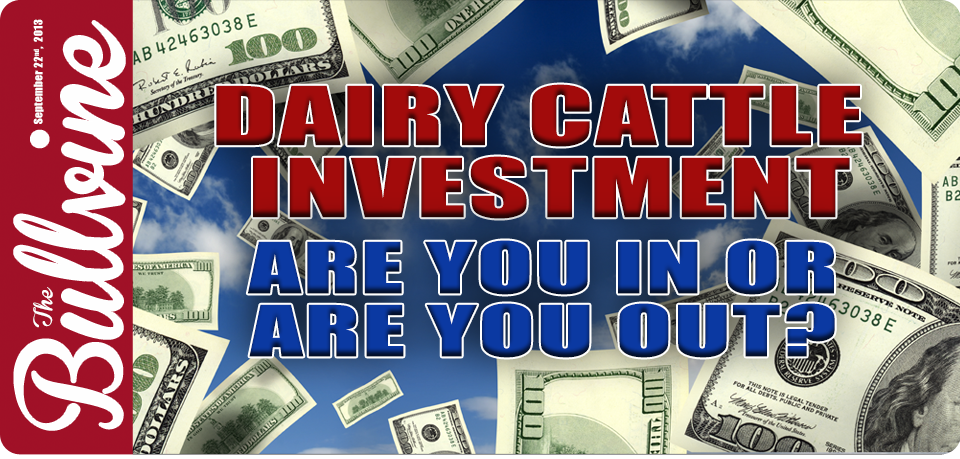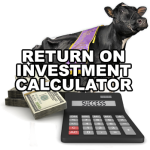Investing in dairy cattle can seem risky to many breeders. Doing so, when prices are setting new records, can scare even the most confident among us. However, more recently, prices have taken a downward trend and now could be the time to ask, “Am I in this for the long haul? Or do I prefer to sit on the sidelines?”
With many sales coming up throughout North America, there are certainly going to be lots of animals to choose from. For the first time in recent years, supply might be greater than demand. There are two main reasons for this. First, so many of the top cattle have been on extensive IVF programs that the owners of these cattle have way more daughters than their breeding program needs. (Read more: FAST TRACK GENETICS: More Results in Less Time and IVF: Boom or Bust for the Dairy Industry) Considering the significant investment that IVF requires, these breeders are looking to recoup their expenses as soon as possible. Also typically these calves are most valuable at as young an age as possible, so that their indexes are as high relative to the rest of the breed as possible (Read more: Informed Heifer Buying – Are you fully prepared?)
The second reason that prices may be the lowest we have seen in years is that it appears that we have passed the investor bubble that funded massive investment and high prices over the past few years. Many early investors are now realizing that there were more expenses associated with running their genetic programs than they first anticipated (i.e. IVF, recipients, feed etc.) and are starting to wonder if it was a wise investment after all. Most were thinking their investment have a short-term 2-3 year payout and not take longer than that. Perhaps they didn’t account for three specific things:
- Flush history of the animals they were purchasing.
Even with IVF there is no comparison on the return of a family that flushes well compared to one that only produces 4-5 eggs even on IVF. IVF may give more progeny than you would have had using traditional flush methods, but it also incurs more expense. - Cost of recipients
One area many breeders/investors do not account for when first purchasing is recipient costs. From that purchase to, feeding and then adding on implanting expenses, the investment in recipients can often outweigh the cost of the actual donor animal. After multiple years of flushing and then starting to flush the progeny of the original donor, these costs can skyrocket. - True return on investment
First things first. I know many investors invested without even having a clear plan. “They just wanted to make big money.” In addition, thought that ROI would happen quickly. Many perceptive and knowledgeable investors would have realized that a significant return would have to come from semen sales and not from live animal sales. The problem with building your program around semen sales is that you first need to be in the top .1 percent of the breed and secondly it takes many years to actually see this payoff.
Having said all that, now just may be the wise time to invest. You see the initial whoosh has passed and prices are now dropping on many great animals. Over the past few months I have seen animals that are within the top .2 percent of the breed selling for less than $5,000, sometimes even less than $3,000. (Read more: Where did the money go?) Many naysayers would say this is the price these animals should be selling for anyway. Those who are willing to do their homework, invest their time and not just their money, are now able to pick up some great animals that can significantly advance their breeding programs. Even if you have no interest in doing IVF on them, at those prices they can make their return with just traditional flushing techniques, or even just breeding them normally.
The Bullvine Bottom Line
There is no question that any marketplace is going to have its highs and lows. It’s those with the perception to understand when the highs are and when the lows are that are going to make the most return on their investment. In the dairy genetics marketplace there is no question we are currently entering a down period. The thing many wise investors will realize is that it takes two years of planning in advance to know when it’s the time to invest and when it’s the time to sell. Just now, if we look two years out, it looks pretty safe to say that prices will be higher. That is simply market economics. Therefore, those with the cash flow to invest in some additions to their herd may find that “Now!” is the exactly right time for them to buy.
Not sure how much to spend on that great 2 year old or heifer?
Want to make sure you are investing your money wisely?
Download our Dairy Cow Investment Calculator.

















Leave a Reply
You must be logged in to post a comment.